Dacia Duster vs Toyota RAV4 – erot ja hinnat vertailussa
Kustannukset ja kulutus
Hinta ja tehokkuus ovat usein ensimmäiset valintakriteerit auton ostossa. Tässä näkyy, kumpi malli on pitkällä aikavälillä edullisempi – tankatessa, ladatessa tai hankintahinnassa.
Dacia Duster on hinnassa selvä edullisempi – sen lähtöhinta on 19000 €, kun taas Toyota RAV4 maksaa 41000 €. Ero on noin 22000 €.
Myös polttoaineenkulutuksessa näkyy ero: Toyota RAV4 kuluttaa 1 L ja on siten vakuuttava taloudellisempi kuin Dacia Duster, jonka kulutus on 4.70 L. Ero on noin 3.70 L /100 km.
Moottori ja suorituskyky
Moottorin alta paljastuu, kumpi malli on urheilullisempi ja kiihtyy paremmin.
Moottoritehossa Toyota RAV4 on selvä etulyöntiasemassa – 306 hv verrattuna 158 hv:een. Ero on noin 148 hv hv.
Kiihdytyksessä 0–100 km/h Toyota RAV4 on selvä nopeampi – se saavuttaa 100 km/h ajassa 6 s, kun taas Dacia Duster tarvitsee 9.40 s. Ero on noin 3.40 s sekuntia.
Huippunopeudessa on edellä – se yltää :een, kun taas saavuttaa . Ero on noin .
Tila ja käytännöllisyys
Perheauto vai arjen kumppani – kumpi tarjoaa enemmän tilaa, mukavuutta ja käytettävyyttä?
Istuimet: tarjoaa enemmän istumapaikkoja – vs. .
Omapainossa Dacia Duster on huomattava kevyempi – 1377 kg verrattuna 1745 kg:een. Painoero on noin 368 kg.
Tavaratilan koossa Toyota RAV4 tarjoaa jonkin verran enemmän – 580 L verrattuna 517 L:een. Ero on noin 63 L.
Maksimikantavuudessa Toyota RAV4 pärjää tuskin havaittava paremmin – jopa 1690 L, noin 81 L enemmän kuin Dacia Duster.
Kantavuudessa Toyota RAV4 on selvästi havaittava parempi – 600 kg verrattuna 453 kg:een. Ero on noin 147 kg.
Kuka vie voiton?
Kokonaisuudessaan Toyota RAV4 on antaa kilpailijalle vähän mahdollisuuksia ja nappaa näin DriveDuel Champion -tittelin.
Se vakuuttaa tasapainoisemmalla kokonaisuudellaan ja on käytännöllisempi kumppani arjessa.
 @ Toyota Motor Corporation
@ Toyota Motor Corporation
Toyota RAV4
Kustannukset ja kulutus
Näytä yksityiskohtainen analyysi
Moottori ja suorituskyky
Näytä yksityiskohtainen analyysi
Mitat ja kori
Näytä yksityiskohtainen analyysi
Dacia Duster
Dacia Duster on yllättävän karismaattinen vaihtoehto budjettitietoiseen ostajalle: se tarjoaa rouhean maasturin olemuksen ja käytännöllisyyden ilman turhia kikkailuja. Jos haluat auton, joka näyttää isommalta kuin hinnasta voisi päätellä, Duster pitää sekä hermot että lompakon tyytyväisinä.
Tiedot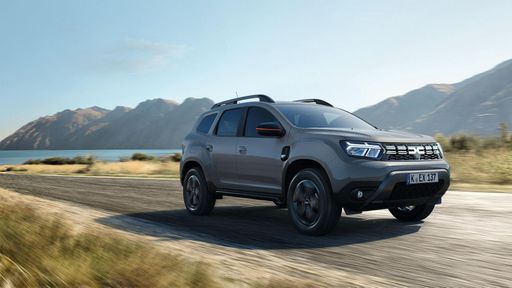 @ Dacia / Renault Group Media
@ Dacia / Renault Group Media
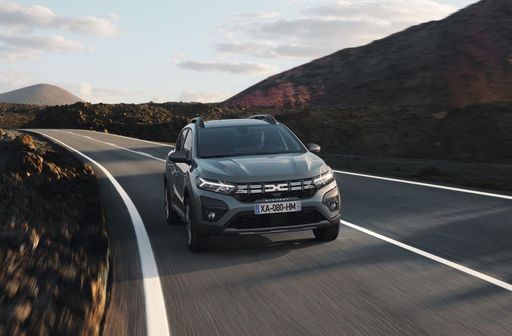 @ Dacia / Renault Group Media
@ Dacia / Renault Group Media
 @ Dacia / Renault Group Media
@ Dacia / Renault Group Media
 @ Dacia / Renault Group Media
@ Dacia / Renault Group Media
Toyota RAV4
Toyota RAV4 on luotettava ja käytännöllinen katumaasturi, joka tarjoaa runsaasti tilaa perheelle ja tekee arjen logistiikasta helppoa ilman turhaa meteliä. Ajo-ominaisuudet ovat rauhalliset ja ennakoitavat, ja ulkonäkö pysyy hillityn tyylikkäänä — erinomainen valinta niille, jotka haluavat autoon enemmän järkeä kuin draamaa.
Tiedot @ Toyota Motor Corporation
@ Toyota Motor Corporation
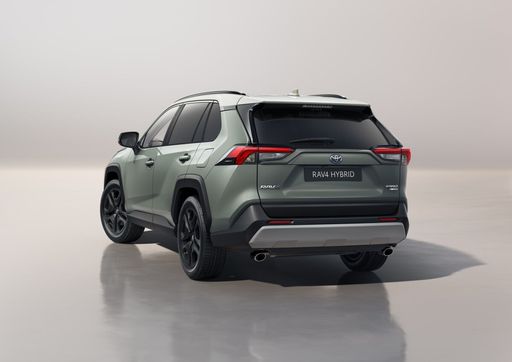 @ Toyota Motor Corporation
@ Toyota Motor Corporation
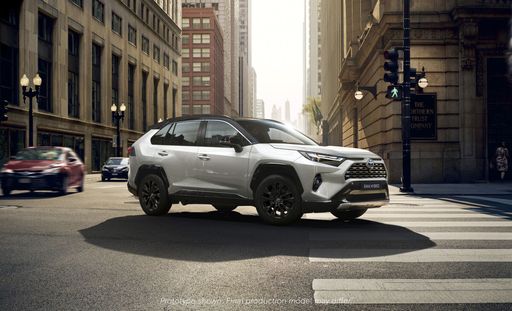 @ Toyota Motor Corporation
@ Toyota Motor Corporation
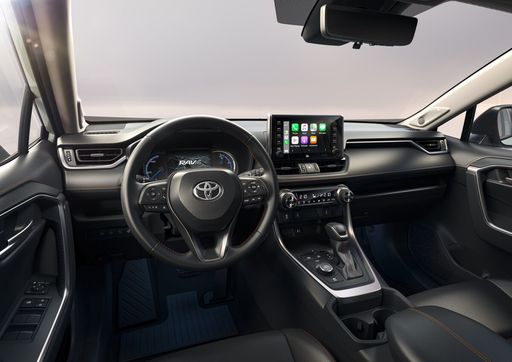 @ Toyota Motor Corporation
@ Toyota Motor Corporation
 @ Dacia / Renault Group Media
@ Dacia / Renault Group Media
|
 @ Toyota Motor Corporation
@ Toyota Motor Corporation
|
|
|
|
Kustannukset ja kulutus |
|
|---|---|
|
Hinta
19000 - 29100 €
|
Hinta
41000 - 65000 €
|
|
Kulutus L/100km
4.7 - 7.5 L
|
Kulutus L/100km
1 - 5.6 L
|
|
Kulutus kWh/100km
-
|
Kulutus kWh/100km
-
|
|
Sähköinen toimintasäde
-
|
Sähköinen toimintasäde
75 km
|
|
Akun kapasiteetti
0.60 kWh
|
Akun kapasiteetti
-
|
|
CO2
107 - 124 g/km
|
CO2
22 - 128 g/km
|
|
Polttoainesäiliön tilavuus
50 L
|
Polttoainesäiliön tilavuus
55 L
|
Mitat ja kori |
|
|---|---|
|
Kori
SUV
|
Kori
SUV
|
|
Istuimet
5
|
Istuimet
5
|
|
Ovet
5
|
Ovet
5
|
|
Omamassa
1377 - 1455 kg
|
Omamassa
1745 - 1910 kg
|
|
Tavaratila
348 - 517 L
|
Tavaratila
520 - 580 L
|
|
Pituus
4343 mm
|
Pituus
4600 mm
|
|
Leveys
1813 mm
|
Leveys
1855 mm
|
|
Korkeus
1656 - 1659 mm
|
Korkeus
1685 mm
|
|
Maksimi tavaratila
1414 - 1609 L
|
Maksimi tavaratila
1604 - 1690 L
|
|
Kantavuus
450 - 453 kg
|
Kantavuus
390 - 600 kg
|
Moottori ja suorituskyky |
|
|---|---|
|
Moottorityyppi
Bensiini MHEV, Täyshybridi, Kaasu (LPG)
|
Moottorityyppi
Täyshybridi, Plug-in hybridi
|
|
Vaihteisto
Manuel, Automaatti
|
Vaihteisto
Automaatti
|
|
Vaihteiston tyyppi
Manuaalivaihteisto, Automaattinen manuaalivaihteisto, Kaksoiskytkin automaatti
|
Vaihteiston tyyppi
CVT-vaihteisto
|
|
Vetotapa
Etuveto, Neliveto
|
Vetotapa
Etuveto, Neliveto
|
|
Teho hv
115 - 158 hv
|
Teho hv
218 - 306 hv
|
|
Kiihtyvyys 0-100 km/h
9.4 - 11.6 s
|
Kiihtyvyys 0-100 km/h
6 - 8.4 s
|
|
Huippunopeus
180 km/h
|
Huippunopeus
180 km/h
|
|
Vääntömomentti
190 - 230 Nm
|
Vääntömomentti
-
|
|
Sylinterien lukumäärä
3 - 4
|
Sylinterien lukumäärä
4
|
|
Teho kW
84 - 116 kW
|
Teho kW
160 - 225 kW
|
|
Iskutilavuus
1199 - 1789 cm3
|
Iskutilavuus
2487 cm3
|
Yleiset |
|
|---|---|
|
Mallivuosi
2025
|
Mallivuosi
2024 - 2025
|
|
CO2-tehokkuusluokka
D, C
|
CO2-tehokkuusluokka
D, B
|
|
Merkki
Dacia
|
Merkki
Toyota
|
Mitä vetotapavaihtoehtoja Dacia Duster tarjoaa?
Mallia tarjotaan Etuveto tai Neliveto-versiona.
Näytetyt hinnat ja tiedot ovat arvioita, jotka perustuvat Saksan listahintoihin, ja voivat vaihdella maittain. Nämä tiedot eivät ole oikeudellisesti sitovia.
